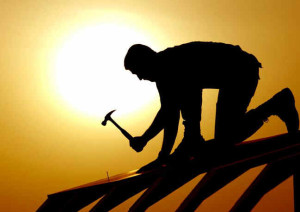For anyone who wants to design a collectible game, this is the series for you. Whether you want to make a collectible card game, miniatures game, or if you just want to add collectible components into your designs, these principles are here to guide you.
What is A Collectible Game?
I define a collectible game by the following criteria
- The game is not contained in one purchase
- Items in the game have scarcity [note]i.e. some things are rarer than others [/note]
- Contents of the game are not fixed [note]i.e. You don’t always know what you are getting [/note]
Each collectible game must support countless individual items and thus is best thought of as a platform upon which you will make many other games.
In the coming weeks, we are going to dig deep into the mechanics and process for building a collectible game from start to finish. For those of you who are more into my philosophical posts and aren’t into game design, you might want to skip this one. For everyone else, let’s get to work!
Process Overview

Building a game is a lot like building a house. You need to build things in the proper order and with the proper emphasis in order to make a game that will stand the test of time. Many designers I speak to spend a lot of time worrying about the paint color while the foundation is still unsound. Don’t fall into this trap!
I break collectible game design into five distinct stages.
1. Engine Design
2. Engine Development
3. Component Design
4. Component Development
5. Polish
Before we get too deep into analyzing each of these phases, there are two rules to keep in mind.
1. Design Phases are Fluid
There is usually not a hard line between when you work on one phase vs. another. You can’t, for example, properly test a game engine without at least some defined components. Similarly, you will often discover engine improvements while working on component development. Each phase shifts the emphasis of your testing, not the essential nature of the process.
2. The Core Design Loop is Still King
The Core Design Loop is at the foundation of all good design.[note] You can see an overview of this process here [/note] Each of the five phases above represents a different focus as you go through the Core Design Loop. You should expect to complete at least one loop during each phase (and most likely far more than one). As a reminder, the steps of the Core Design Loop are:
1. Find Inspiration
2. Set Parameters
3. Brainstorm
4. Prototype
5. Test
6. Iterate
Master the concept of the Core Design Loop before worrying about the collectible design phases.
The 5 Phases Overview
Now that we have that out of the way, let’s look at an overview of each of the collectible design phases. We will dig deeper into these phases in the future parts of this series.
Engine Design
The engine is the foundation of your game “house” At this phase, the main purpose is to take your core inspiration and find out how it will be expressed in your game. I call this engine design because it is what makes the whole game run at a deep level. This is the period where you take your big ideas and turn them into testable realities. What is the main resource of the game? What is the objective? Why is it going to be fun? Don’t get bogged down in minutiae during this phase. Look past the superficial and focus on fundamentals. The key questions to ask are:
- What is the core play loop?
- What is the fundamental tension of the game?
- What are the resources, victory conditions, and methods of interaction with other players?
Engine Development
During engine development, you are finishing the basic framework for your game. This is where you shape your game design house with walls and a roof. At this point your core game loop should be clearly defined as additional rules are added, tweaked and removed to hit your objectives. Key questions at answer are
- What is the average game length ?
- How many collectible objects are required per player (both in collection and during a single game)?
- What are the number ranges used in the game (max-min ranges for collectible objects, fixed numbers like victory points, health, etc.)?
- What are the exchange rates between different game resources?
Component Design
Component Design is where you decide what goes into your house, picking out the furniture, curtains, and appliances. The focus is on making sure the different pieces of each room fit your purposes and make sense together. Here is where you begin to flesh out all of the elements of your game, be they cards, figures, loot drops, or anything else. When doing initial component design, it is important to build in systems that support the player in understanding the dozens, hundreds, or thousands of collectible items you will create over time. These systems give players the ability to process all this information by “chunking” the objects into larger groups. To do this, you need to establish:
- Categories / Factions
- Themes
- Cycles and Structures
Component Development
Component Development is where your game design house becomes livable, placing all the furniture, tables, chairs, etc. exactly where you want them. This is where you focus on the strength of different strategies and ensure that players are incentivized to do the things you want them to do. Most designers place too much emphasis on this phase too early, but now is the time to
- Balance the Available Strategies
- Establish Silver Bullets
- Emphasize the Fun Play Patterns
Polish
Polish is the final layer of paint and decoration to make your game design house beautiful and attractive. This is what separates professional games from amateur prototypes. As great as your game may be, if it doesn’t look good and make sense to the consumer, it will never succeed. This is where you can let your inner OCD run rampant. During this phase, the focus is on:
- Comprehensive Rules
- Templating
- Art, Names, Story
I hope you found this basic overview helpful. Next week, I’ll dig in more detail to Phase 1: Core Engine Design.


